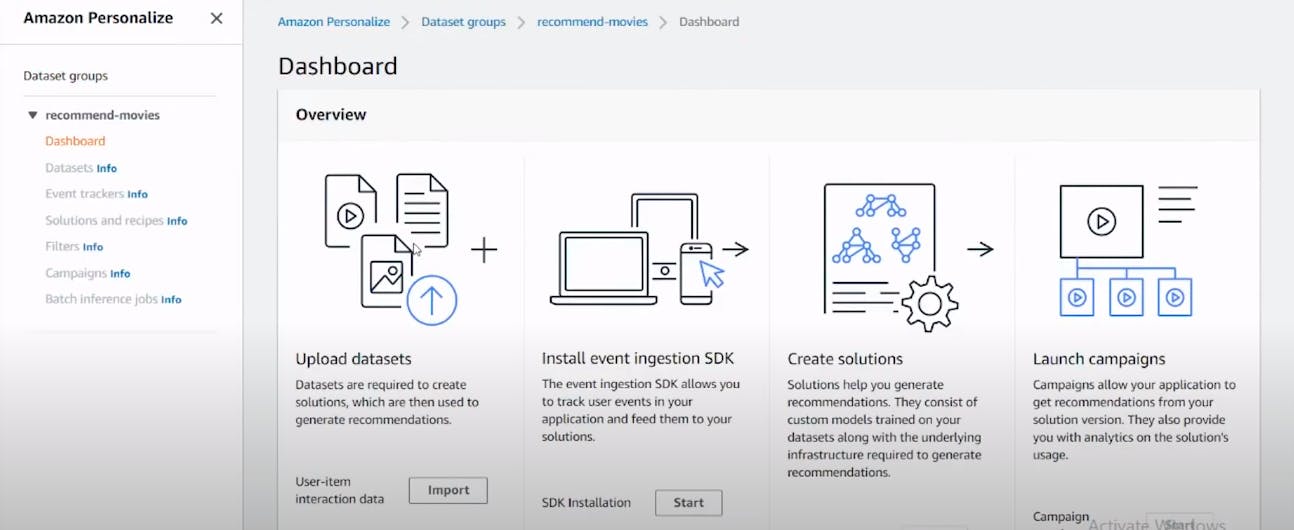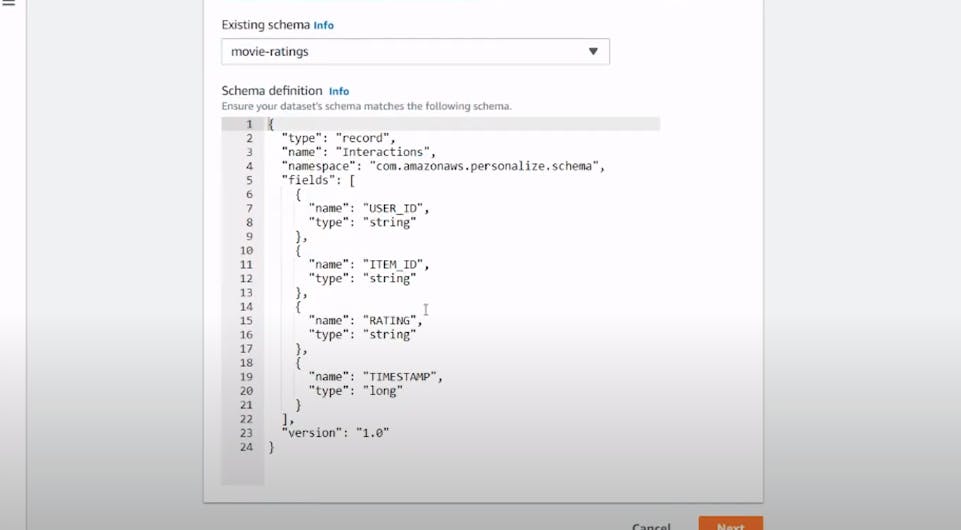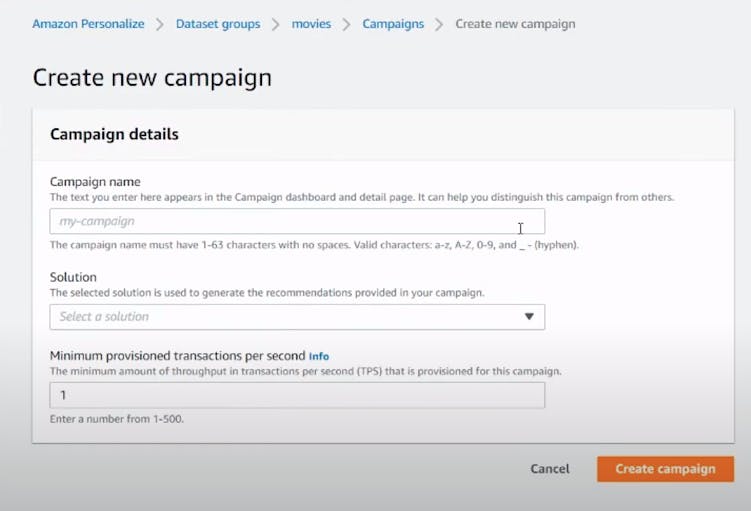
Photo by Alesia Kaz on Unsplash
From Data to Decisions: Leveraging Amazon Personalize for Recommendation Systems
Introduction
In an era dominated by personalized experiences, recommendation systems have become essential for businesses seeking to engage and retain customers. Amazon Personalize is a leading solution, offering advanced machine learning capabilities to tailor recommendations based on individual preferences. This article explores the transformative power of Amazon Personalize, delving into its ability to drive user engagement, boost conversions, and foster long-term customer loyalty. Join us as we uncover the key principles and benefits of building recommendation systems with Amazon Personalize.
In this article, you will learn how to use the Amazon Personalize service to create Recommendation systems for your applications. For the demonstration, we are going to use the popular MovieLens dataset. You can download the dataset from this link.
Creating Dataset Groups
A dataset group is a container for Amazon Personalize resources, including datasets, domain recommenders, and custom resources.
To create a Dataset Group, click on the "Create Dataset Group" button.

Mention the name of the Dataset Group and click "Next". This will create the new Dataset Group.
Once the Dataset Group creation is complete, select it to see the dashboard:

First, we are going to focus on the "Upload Datasets" section. Before continuing, please download the dataset from the link attached above.
Uploading the Datasets
We will start with uploading the User-item interaction data. Click on the "Import" button adjacent to it. This will open the "Configure Schema" form.
Mention the name of the dataset. Then move to the "Schema Details" section.
Select the "User Existing Schema" option, as we will use the existing "movie-ratings" schema for this project and modify it to create a new schema. The column names need to be updated based on our dataset. We can fix this in the code editor below.

In the Dataset you downloaded, there will be 4 .csv files. To decide the column names, open the links.csv file. Update the schema accordingly. After that, copy the JSON and paste it into the code editor after you select the "Create New Schema" radio button along with a new name of the schema. Hit the "Next" button.
On the next page, you need to upload the .csv file in an S3 bucket and mention the file location along with an IAM policy name to access the bucket.
Once completed, it will complete the uploading of the user-item interaction dataset.
In the same way, upload the users.csv and movies.csv in User and Item Data respectively.
This will complete the Uploading of all datasets required for the tutorial.

Solutions and Recipes
In the next step, we need to create a solution and attach a recipe to it. There are many recipes provided by the service. We can create multiple Solutions using different recipes to test out the performance between them.
You can create the solutions using the "Create Solution" form. Just mention a unique name to the solution and attach a recipe to it.

Creating a Campaign
Our tutorial's final step is creating a campaign to test the recommendation.

Select the name of the new campaign and select a solution you had created in the earlier step. Click on the "Create Campaign" button.
This will create the campaign. Once created, click on the newly created Campaign name and go to the "Personalization API" tab. To test the recommendation, go to the "Test Campaign Results" section.

Open the users.csv file and select a USER_ID and 4 MOVIE_IDs and paste them in the User ID and Item IDs field respectively. After that, click the "Get Personalized Rankings" button.
You should see the Item ranking table.

Thus, we have successfully got the order of personalization of movies for an user using the Amazon Personalize Service.
Conclusion
Amazon Personalize stands as a formidable tool for businesses looking to stay ahead in the competitive landscape of personalized experiences. By harnessing its advanced machine learning algorithms, companies can not only deliver tailored recommendations but also foster deeper connections with their audience. As we wrap up our exploration, it's evident that the implementation of recommendation systems powered by Amazon Personalize not only enhances user engagement and satisfaction but also drives tangible business growth. Embracing this technology enables businesses to stay agile, adaptive, and responsive to the evolving needs and preferences of their customers, ultimately securing a strong position in the digital marketplace.

